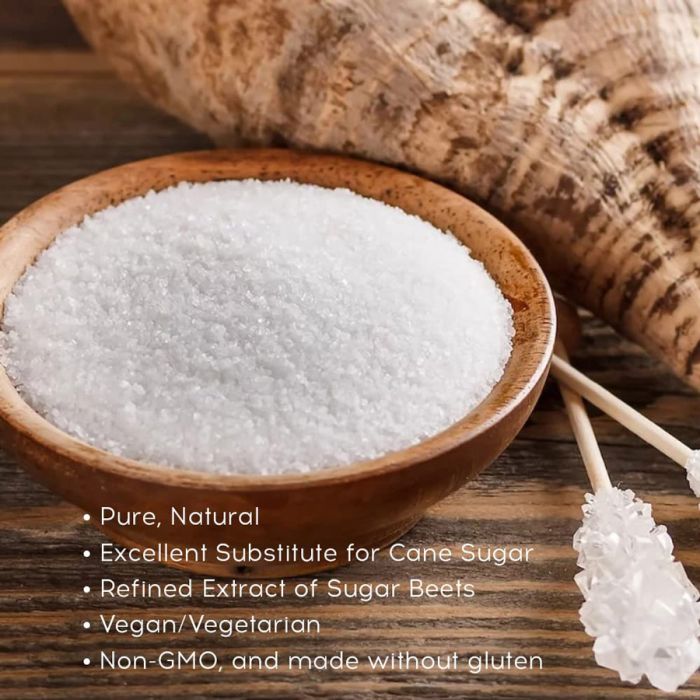The sourcing of beet sugar vs cane sugar affects environmental sustainability in the sugar industry.
The sourcing of beet sugar vs cane sugar affects environmental sustainability in the sugar industry.
Blog Article
Discover the Uses and Perks of Beet Sugar Vs Cane Sugar in Your Daily Diet Regimen
Exploring the distinctive qualities of beet and cane sugar reveals greater than just their sweetening capacities; it highlights their one-of-a-kind influence on health and wellness and cookeries. Beet sugar, known for its subtle flavor, is frequently preferred in delicate desserts, whereas cane sugar, with its hint of molasses, adds splendor to durable meals. Each type holds its very own nutritional profile and glycemic effects, welcoming a much deeper understanding of their functions in a balanced diet plan and lasting intake practices.
Beginning and Production Procedures of Beet and Cane Sugar

The distinctive climates and dirt types needed for expanding sugar beetroots and sugarcane add to distinctions in their cultivation methods and geographical circulation, affecting the economics and sustainability of their manufacturing. beet sugar vs cane sugar.
Nutritional Contrast In Between Beet Sugar and Cane Sugar
Regardless of stemming from different plants, beet sugar and cane sugar are nutritionally very comparable, both largely containing sucrose. Each provides about 4 calories per gram, converting to roughly 16 calories per tsp. Structurally, both sugars are composed of about 99.95% sucrose, with very little amounts of various other materials like wetness and trace element, which do not considerably alter their dietary accounts.

Eventually, when selecting between beet sugar and cane sugar based upon dietary content alone, both deal the same advantages and disadvantages as they are basically forms of the same molecule-- sucrose, providing quick energy without various other nutrients.
Effect On Wellness: Glycemic Index and Caloric Material
Discovering additionally into the impacts of beet sugar and cane sugar on health and wellness, it is vital to consider their glycemic index and calorie material. The glycemic index (GI) of both beet and cane sugar is around 65, categorizing them as high-GI foods, which can create fast spikes in blood glucose degrees.
Each type of sugar contains around 4 calories per gram, making their caloric content matching. For those monitoring caloric consumption, specifically when handling weight or metabolic health and wellness conditions, recognizing this equivalence is crucial (beet sugar vs cane sugar). Nonetheless, too much usage of any kind of high-calorie, high-GI food can add to health and wellness problems such as weight problems, heart illness, and insulin resistance.
Environmental and Economic Factors To Consider of Sugar Production
Beyond wellness impacts, the manufacturing of beet and cane sugar his comment is here additionally elevates substantial ecological and financial worries. Sugar beet cultivation tends to need cooler climates and has a lower geographical impact contrasted to sugar cane, which thrives in tropical areas.
In addition, making use of chemicals and plant foods in both beet and cane sugar farming can cause dirt deterioration and pollution, additional influencing biodiversity and local water bodies (beet sugar vs cane sugar). The option in between growing sugar beet or cane often depends upon neighborhood ecological problems and economic variables, making the sustainability of sugar manufacturing a complicated problem
Culinary Applications and Flavor Distinctions
While the environmental and financial aspects of sugar manufacturing are certainly substantial, the selection between beet and cane sugar also influences cooking applications and taste profiles. Beet sugar, stemmed from the sugar beet plant, is understood for its incredibly neutral taste. This makes it a functional active ingredient in baking, where it does not alter the flavor of other components. It liquifies promptly and is perfect for use in cakes, cookies, and breads.
Walking cane sugar, removed from sugarcane, commonly retains molasses traces, which present a distinctive richness and deepness. This mild molasses taste enhances the intricacy of baked items, sauces, and marinades. It is specifically favored in products where a caramel touch is desired, such as in brownies or gingerbread. The slight variation in moisture content between beet and cane sugar can impact the texture and uniformity of recipes, making cane sugar a favored selection for particular dishes that benefit from its distinct residential properties.

Final Thought
In conclusion, both beet and cane sugar have distinctive beginnings and production i was reading this procedures, supplying comparable dietary profiles with slight distinctions in sodium material and taste. While their influence on health, especially regarding glycemic index and calories, his response is comparable, the choice in between them usually comes down to environmental, financial elements, and specific culinary needs. Understanding these facets can direct customers in making notified decisions that line up with their health and wellness objectives and flavor choices.
Report this page